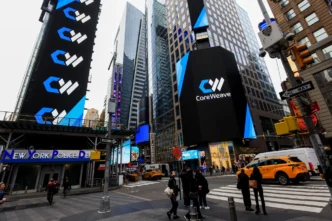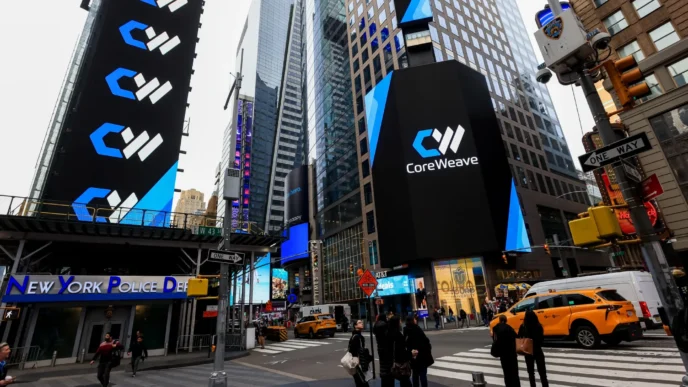The world’s largest technology companies—long seen as the unstoppable engines of artificial intelligence innovation—are beginning to face difficult questions about whether their massive AI investments are sustainable, profitable, or even strategically sound. Recent quarterly earnings from Silicon Valley’s biggest names, including Microsoft, Alphabet, Meta, and Amazon, have revealed a surprising reality: while AI continues to dominate headlines and drive market enthusiasm, the financial returns are not yet matching the immense costs.
After a year of euphoric growth in AI-related valuations, the latest earnings season shows that the business of artificial intelligence is far from a guaranteed gold rush. Revenues tied directly to AI services remain a small fraction of overall income for most companies, while operating costs, infrastructure investments, and talent expenditures are soaring. The result is growing skepticism among investors who once saw AI as the next phase of limitless growth—and now worry that the technology might not deliver profits fast enough to justify the hype.
Rising Costs, Slowing Margins
Microsoft’s recent results highlight the tension at the heart of the AI economy. The company’s Azure cloud division has continued to grow, buoyed by demand for AI training and inference workloads. Yet even as revenue climbs, Microsoft’s capital expenditures have exploded—reaching tens of billions annually—to build and power the massive data centers required for AI operations. While CEO Satya Nadella remains confident that AI will drive future profitability, analysts note that the scale of infrastructure spending is beginning to strain margins, echoing concerns from the early days of the dot-com bubble.
Alphabet, Google’s parent company, faces a similar challenge. The company’s core advertising business continues to perform strongly, but AI-driven projects like Gemini, DeepMind, and new generative search features are proving expensive to maintain. Google’s AI integrations across Search and YouTube have yet to demonstrate clear monetization pathways. Meanwhile, the costs of model training and inference—particularly with multimodal and large-scale systems—are growing faster than expected.
Even Meta, once seen as an AI underdog, is now pouring billions into building out its AI infrastructure, with CEO Mark Zuckerberg declaring that the company will spend aggressively for years to come to ensure it doesn’t fall behind. Yet investors have shown unease at this strategy. Meta’s stock fell sharply after earnings, with analysts pointing out that its AI investments have yet to translate into meaningful new revenue streams outside of advertising optimization.
The Hype Versus Reality Divide
For much of 2023 and 2024, artificial intelligence was positioned as a near-magical growth engine. Big Tech executives spoke of AI as transformative across every industry—from healthcare and education to logistics and entertainment. Venture capital poured into startups promising to disrupt everything with AI-powered products, while corporate boards rushed to include “AI strategy” as a standing agenda item.
But in 2025, the conversation is maturing. While AI undeniably has transformative potential, the path to monetization is proving longer and more complex than many investors anticipated. Building and maintaining large models such as GPT-style systems or image-generation networks is costly, energy-intensive, and difficult to scale profitably. Many enterprise customers remain cautious about adoption, citing privacy concerns, model accuracy issues, and unclear returns on investment.
The result is a growing realization that AI may not deliver exponential financial gains in the near term—at least not without significant restructuring in how it is deployed and priced.
Investors Lose Patience
Wall Street, which once rewarded any company mentioning “AI” with immediate stock price jumps, is now showing signs of fatigue. Analysts have begun pressing executives for clearer data on how AI investments are contributing to the bottom line, rather than merely driving speculative optimism.
For example, while Nvidia continues to benefit from insatiable demand for its AI chips, even it faces looming questions about sustainability. With competitors like AMD and custom chipmakers entering the field, prices could face downward pressure just as hyperscale cloud customers begin to scrutinize their spending. Nvidia’s success has also become symbolic of the entire AI sector’s volatility—its stock price soaring to record highs before dipping amid signs of overexuberance.
Meanwhile, smaller tech players without the deep pockets of the Big Five are struggling to keep pace. Many mid-tier firms are finding themselves priced out of AI infrastructure, leading to industry consolidation and renewed debates over whether AI dominance will ultimately concentrate power in the hands of a few giants.
A Need for Strategic Rethinking
The emerging cracks in Big Tech’s AI story do not mean that artificial intelligence has reached a dead end. Rather, they underscore the need for more strategic, sustainable approaches to innovation. Companies that can balance ambition with disciplined investment—and focus on practical, scalable applications—are likely to emerge stronger than those chasing hype-driven expansion.
AI remains a long-term play. As productivity tools, customer service automation, and data analytics continue to evolve, AI’s true economic impact will likely unfold gradually, much like the early internet era. Yet unlike the internet revolution, the AI boom is unfolding in a world more sensitive to issues of regulation, environmental impact, and data ethics—all factors that could influence profitability.
Looking Ahead: Reality Check or Reinvention?
As 2025 heads into its final quarter, the tech sector stands at a crossroads. Investors are no longer satisfied with abstract visions of an “AI-powered future.” They want evidence—concrete numbers showing how AI improves margins, expands customer bases, and creates defensible market advantages.
For the first time since the generative AI explosion began, Big Tech is being forced to confront a hard truth: the hype cycle may be fading, and real innovation will need to prove itself through sustainable results, not just ambitious promises.
In this environment, the winners will be those who can turn technological breakthroughs into practical, profitable tools—and those who can build AI ecosystems that generate enduring value rather than short-term excitement.
The age of blind faith in AI spending appears to be over. What comes next is a more measured, disciplined phase—one where the line between visionary ambition and fiscal responsibility will define the future of the entire technology industry.
















